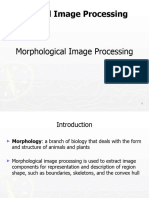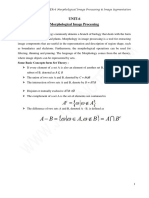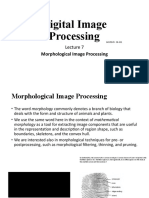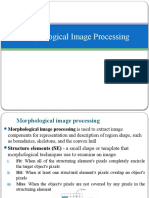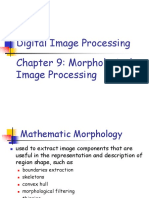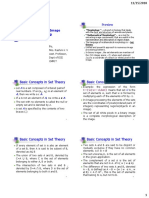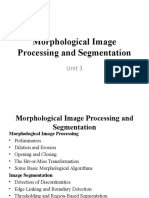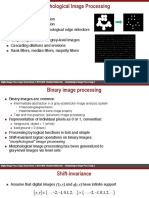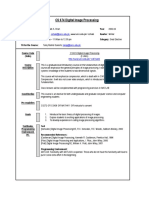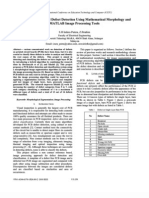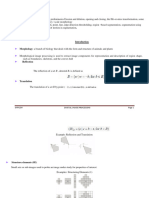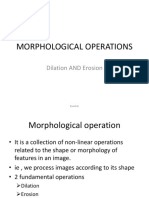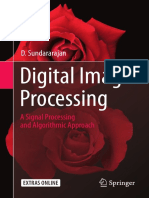0% found this document useful (0 votes)
27 views62 pagesMorphological Image Processing
The document discusses morphological image processing, a technique used to analyze and modify the structure and shape of objects in images based on mathematical morphology. It covers key concepts such as structuring elements, operations like erosion and dilation, and algorithms for boundary extraction, hole filling, and connected component extraction. Additionally, it explains duality in operations and presents various morphological algorithms including thinning, thickening, and pruning.
Uploaded by
privateprivacymailCopyright
© © All Rights Reserved
We take content rights seriously. If you suspect this is your content, claim it here.
Available Formats
Download as PDF, TXT or read online on Scribd
0% found this document useful (0 votes)
27 views62 pagesMorphological Image Processing
The document discusses morphological image processing, a technique used to analyze and modify the structure and shape of objects in images based on mathematical morphology. It covers key concepts such as structuring elements, operations like erosion and dilation, and algorithms for boundary extraction, hole filling, and connected component extraction. Additionally, it explains duality in operations and presents various morphological algorithms including thinning, thickening, and pruning.
Uploaded by
privateprivacymailCopyright
© © All Rights Reserved
We take content rights seriously. If you suspect this is your content, claim it here.
Available Formats
Download as PDF, TXT or read online on Scribd
/ 62






